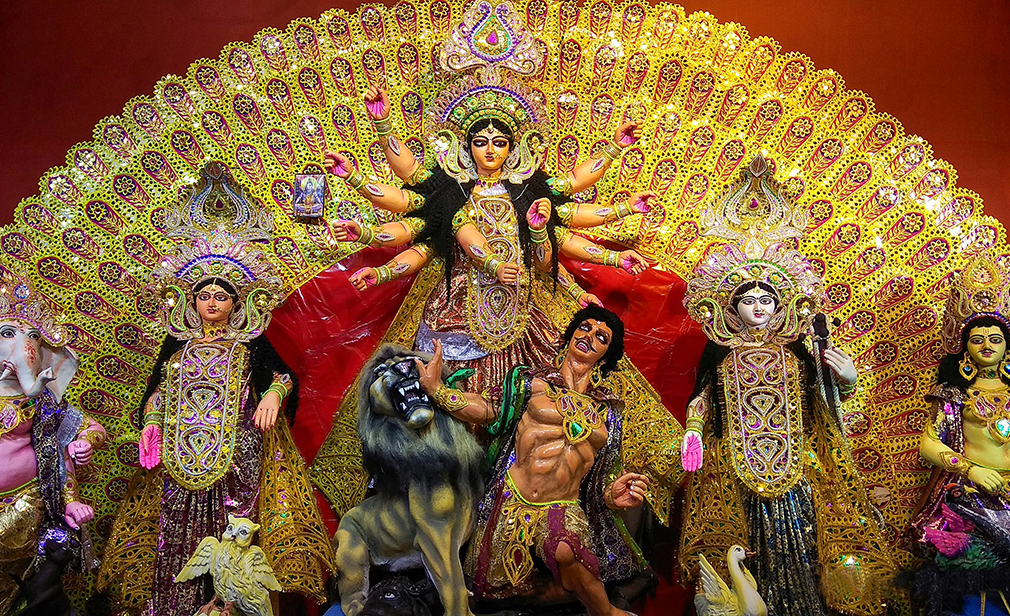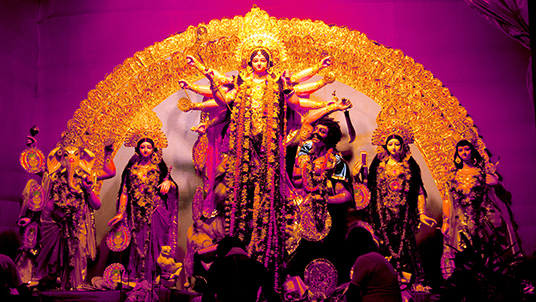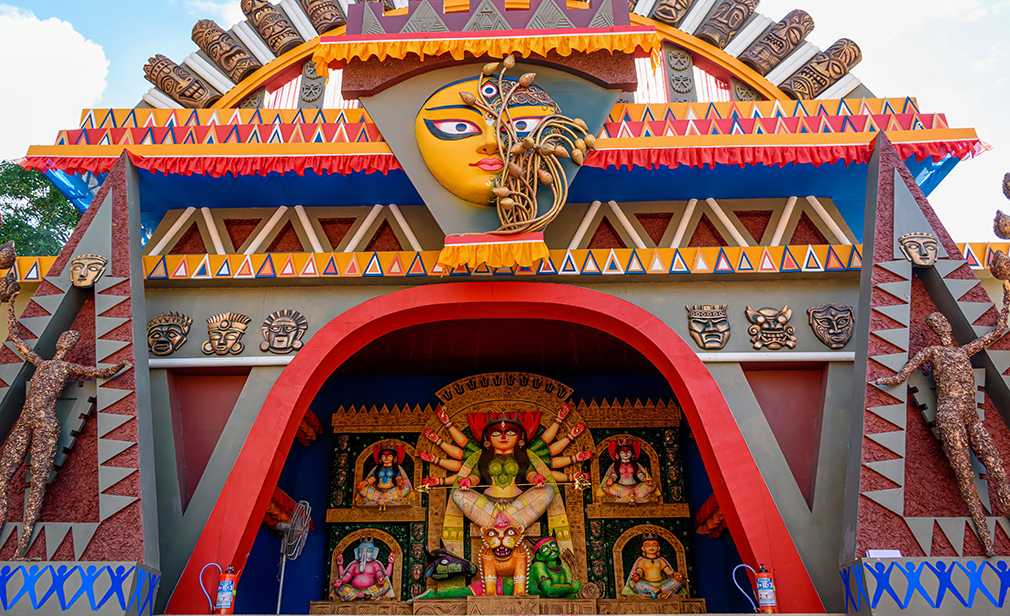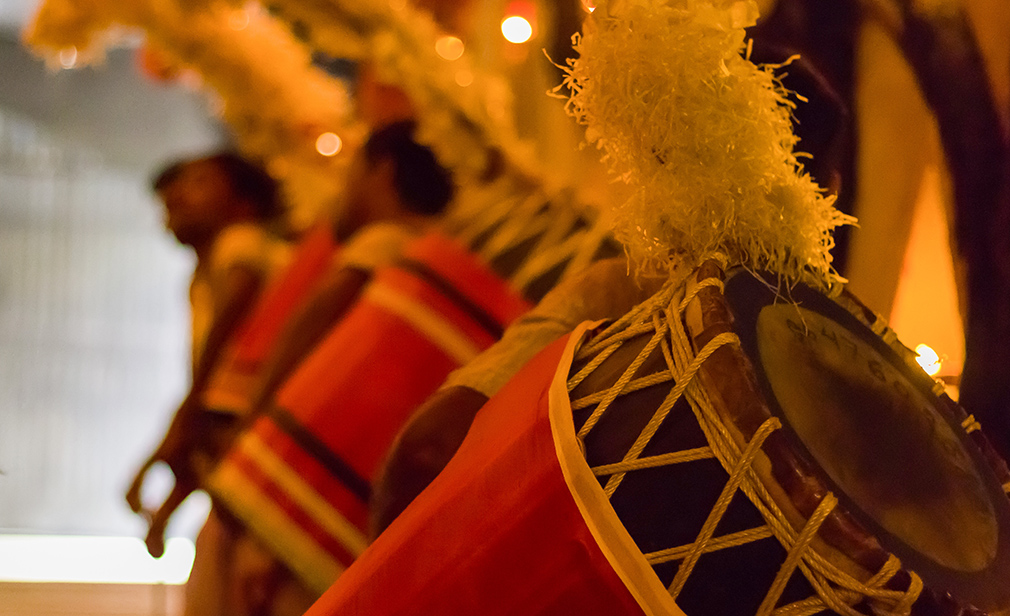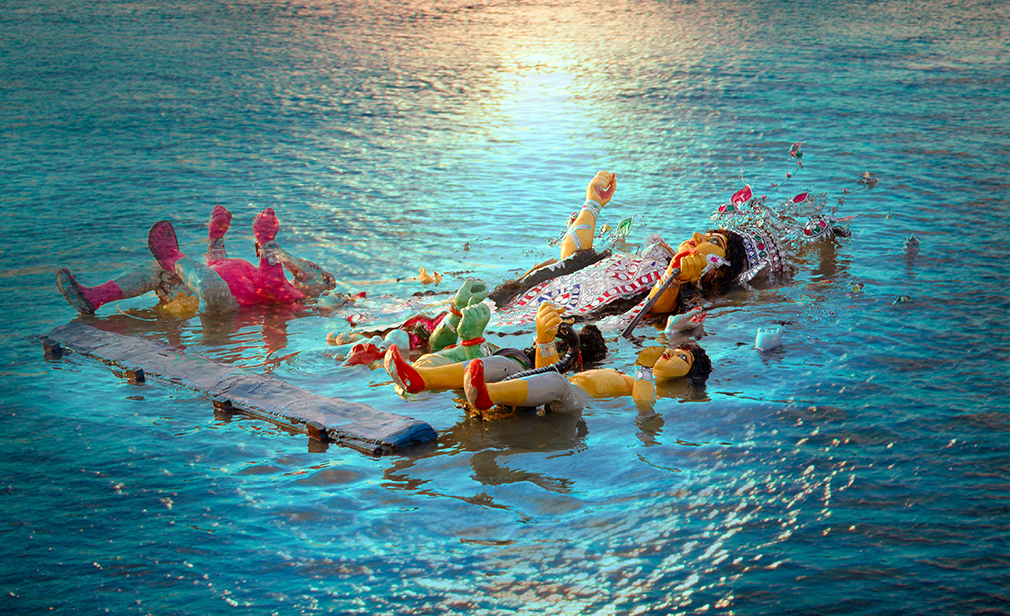A celebration of Goddess Durga and her victory over evil
Durga Puja is celebrated to commemorate the victory of good over evil, based on the mythological tale of Goddess Durga's triumph over the demon king Mahishasura. This festival holds immense significance for the Bengali community, and it is believed that the Goddess visits her earthly abode during this time to bless her devotees. The celebration is a profound expression of faith, devotion, and the spirit of unity among the people of West Bengal and devotees of Goddess Durga everywhere.
A tradition that evolved over centuries
The history of Durga Puja in Bengal dates back to at least the 11th century AD when it was originally performed in Spring. However, a unique tradition emerged when Lord Rama, the hero of the Ramayana, performed the puja in Autumn as part of his battle against the demon king Ravana. The festival, as we know it today, began to take shape in the 16th century when prominent aristocrats like Raja Kangsanarayan and Bhabananda Majumdar organised lavish celebrations. Kolkata itself saw its first Durga Puja in 1610, thanks to Laxmikanta Majumdar, the founder of the Sabarna Roy Chowdhury family, which played a pivotal role in the city's founding.
Creativity knows no bounds
Durga Puja in Kolkata has evolved into a mesmerising display of creativity, thanks to the advent of 'theme pujas' that dot the city during this time. These pujas are performed in meticulously crafted temporary pandals (pavilions), with idols and decorations focused on a central theme, often enlisting celebrated artists, lighting experts, and sculptors. Awards are presented for various aspects, including idol design and environmental sustainability.











